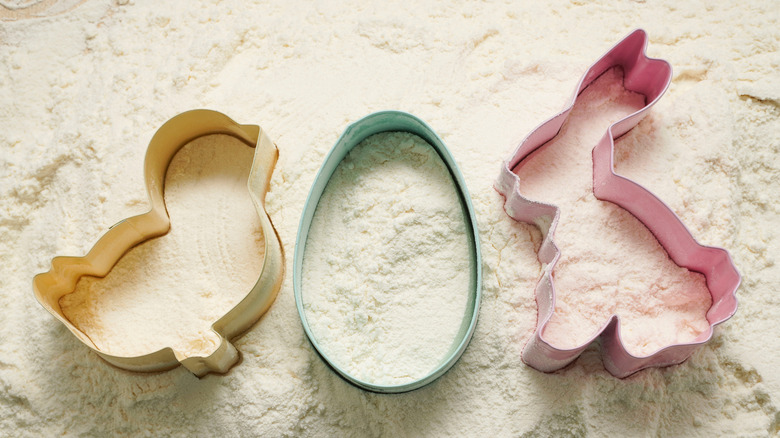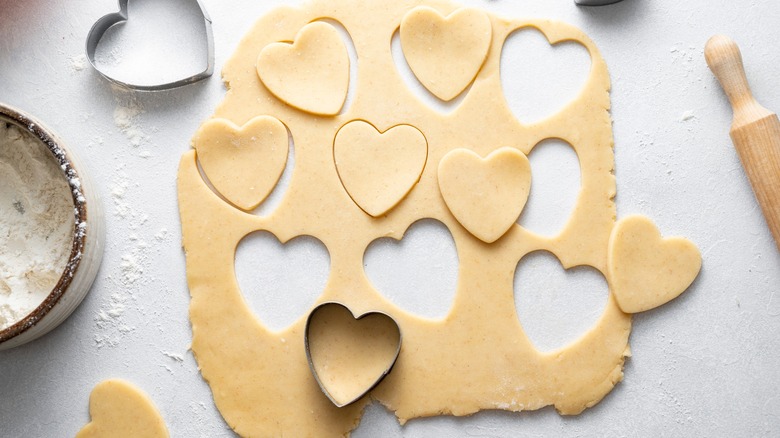The Clever Reason You Should Dip Cookie Cutters In Flour
Making beautiful cookies and biscuits is a breeze with a few cookie cutters in tow. Available in all kinds of unique shapes and sizes, they ensure that baked goods look uniformly stunning and bake consistently. While the type of cookie cutter used does make a difference in the end result, what's even more important is how they're used. Rather than plunge the cutter into the dough, it's best to dip the cutting edges with flour first.
A tip passed down from the infinite wisdom of grandmothers everywhere, dipping cookie cutters in flour has become a hack often cited as a game changer for roll-out cookie recipes. Essentially, when cookie cutters are dipped in flour, this creates a coating around the material, preventing the dough from sticking to the edge as it is used, ensuring that the cookies don't tear. While keeping some flour within reach is a must to avoid sticky situations, the other motive for flouring cutters is to seal the edges of a cookie. With the edges dusted in flour, this helps cookies to better maintain their shape while baking. But this isn't the only thing to remember when working with these helpful little tools.
How to achieve crisper cuts with floured cookie cutters
Choosing the right cookie cutter does indeed make for cleaner cuts. While each material can get the job done, from inexpensive plastic to stunning copper cutters, we're partial to stainless steel. Sturdy and capable of cutting the most detailed of designs, thanks to their sharp edges, these cookie cutters are the best choice. Likewise, versions that aren't too petite or complex in shape will also provide a crisp cut.
With the proper cookie cutter selected, the dough mustn't be terribly wet or warm before rolling it out, as this will cause sticking even if the work surface has been floured. Only once chilled dough has been rolled to an even thickness can cookie cutters work their magic. However, coating their borders with all-purpose flour after each cut (or every few) will minimize sticking as long as you use the proper technique — firmly and swiftly press the tool directly into the dough without twisting. Should you notice some clinging dough in between cuts, wipe down the cutters with a damp paper towel and dry them before continuing the process of dipping and pressing.
Finally, to ensure that cookies hold their shape, carefully move them onto a sheet pan, spacing them evenly so they have room to bake into the most aesthetic treats you've ever seen.

